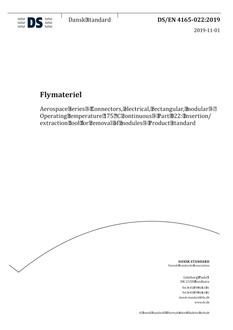-
-
Available Formats
- Availability
- Priced From ( in USD )
-
Available Formats
-
- Immediate download
- $51.00
- Add to Cart
-
- Printed Edition
- Ships in 1-2 business days
- $51.00
- Add to Cart
Customers Who Bought This Also Bought
-

DANSK DS/EN 303 213-1 V1.4.1
Priced From $78.00 -

DANSK DS/EN 4165-022
Priced From $38.00 -

DANSK DSF/PREN ISO 12609-1
Priced From $40.00 -

DANSK DS/ISO/TS 16840-14
Priced From $60.00
About This Item
Full Description
<span style="color:red">NEW!</span>IEC 60793-1-54:2018 is available as <a href="https://webstore.iec.ch/publication/62458">IEC 60793-1-54:2018 RLV</a> which contains the International Standard and its Redline version, showing all changes of the technical content compared to the previous edition. IEC 60793-1-54:2018 outlines a method for measuring the steady state response of optical fibres and optical cables exposed to gamma radiation. It can be employed to determine the level of radiation-induced attenuation produced in Class B single-mode or Class A, category A1 and A2 multimode optical fibres, in either cabled or uncabled form, due to exposure to gamma radiation. The attenuation of cabled and uncabled optical fibres generally increases when exposed to gamma radiation. This is primarily due to the trapping of radiolytic electrons and holes at defect sites in the glass (i.e. the formation of "colour centres"). This test procedure focuses on two regimes of interest: the low dose rate regime suitable for estimating the effect of environmental background radiation, and the high dose rate regime suitable for estimating the effect of adverse nuclear environments. The testing of the effects of environmental background radiation is achieved with an attenuation measurement approach similar to IEC 60793-1-40 method A, cut-back. The effects of adverse nuclear environments are tested by monitoring the power before, during and after exposure of the test sample to gamma radiation. The depopulation of colour centres by light (photo bleaching) or by heat causes recovery (lessening of radiation induced attenuation). Recovery can occur over a wide range of time which depends on the irradiation time and annealing temperature. This complicates the characterization of radiation induced attenuation since the attenuation depends on many variables including the temperature of the test environment, the configuration of the sample, the total dose and the dose rate applied to the sam ...





